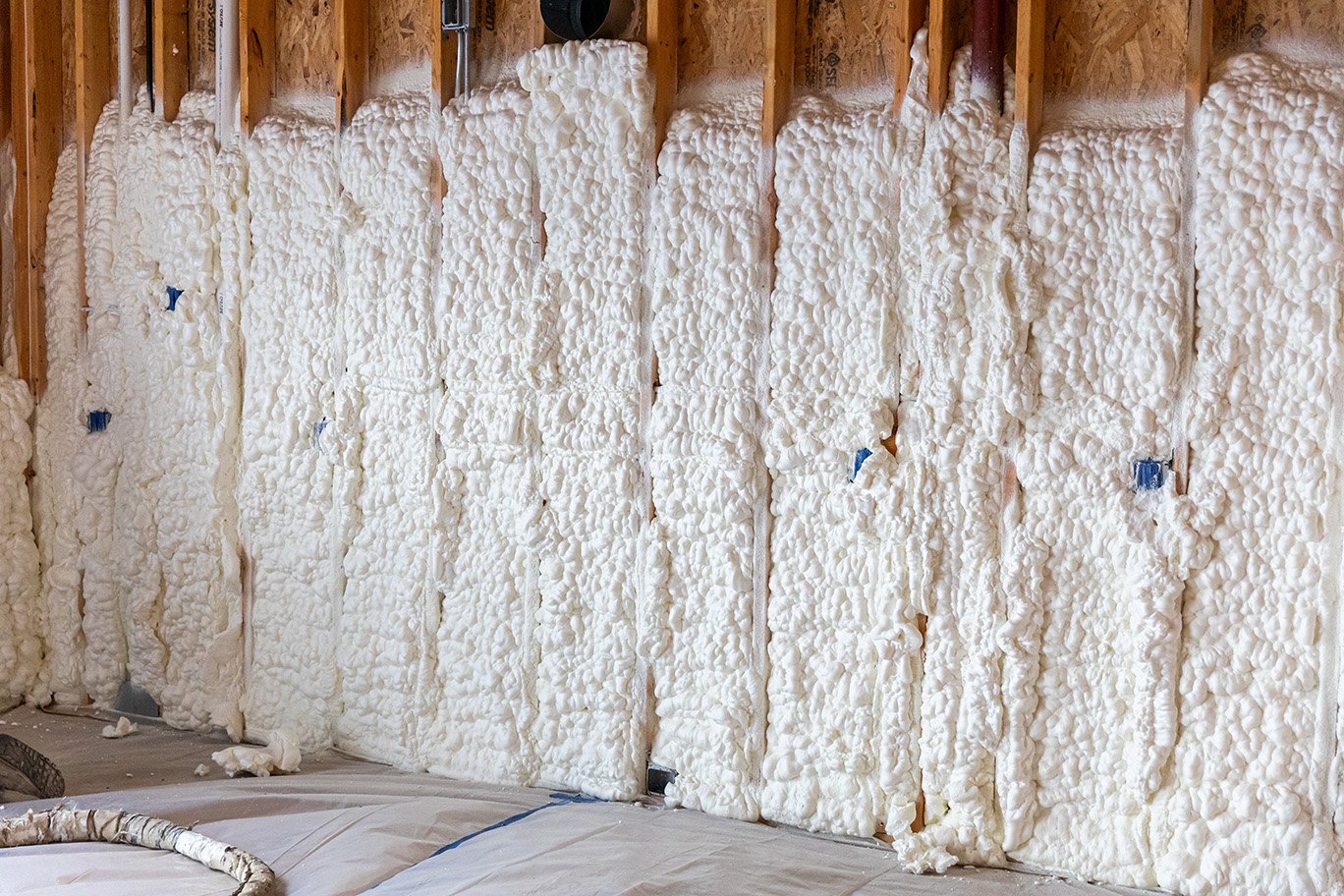Search for topics or resources
Enter your search below and hit enter or click the search icon.
April 8th, 2025
3 min read

When it comes to insulating your home, most people have heard about "R-value." It’s a common term in the industry, but what does it mean?
More importantly, does R-value tell you everything about how well insulation works? Spoiler alert: it doesn’t.
R-value only measures one part of the story when it comes to how heat moves in and out of buildings - Conduction. To get the most out of insulation, we need to address all the three forms of heat transfer: conduction, convection, and radiation.
In this article, we'll explain each of these forms of heat transfer and why they matter. By the end, you’ll understand why spray foam insulation, which addresses all three forms of heat transfer, can often provide superior results.
The first form of heat transfer is conduction, and it’s the one that R-value measures. Conduction happens when heat travels through a solid material, like the walls, roof, or floor of your home. Imagine placing a metal spoon in a hot cup of coffee. After a little while, the spoon gets hot too, because heat is moving directly through it. This is conduction at work.
With insulation, the goal is to slow down conduction as much as possible to keep heat from getting inside during the summer and to prevent heat from escaping in the winter. R-value is a measurement of how well a material resists this transfer of heat. The higher the R-value, the better the insulation is at slowing down conduction.
But here's the catch: R-value only measures conduction. It doesn’t account for heat that can get through other ways, such as air leaks or radiant heat.
The second form of heat transfer is convection, which happens when heat is carried by moving air. Air can infiltrate into your home through cracks, gaps, and other openings, bringing outdoor heat along with it in summer, making it harder to keep your home cool. In winter, hot air leaks out, so your heating system has to work overtime to keep you warm.
Convection is often one of the biggest sources of heat loss (or gain) in a home. The thing to remember here is that R-value does not measure this. Convection is managed by reducing air leakage and properly installing air barriers in your building envelope.
Traditional insulation materials like fiberglass batts and blown-in cellulose do little to stop air movement. However, spray foam insulation provides an insulation and air barrier in a single application which reduces air from leaking in or out, making it a great choice for stopping convection-based heat loss.
The third form of heat transfer is radiation, the movement of heat through waves. Unlike conduction or convection, radiation doesn’t require a solid or a fluid to move. Think of the warmth you feel on your skin when the sun shines on you—that’s radiant heat. Radiant heat is also a factor inside your home, especially in attics.
When your roof heats up from the sun, the interior exposed surface in the attic radiates heat to the attic space air. This is why temperatures in a traditional attic can exceed 140°F when it is only 100°F outside, which makes your air conditioner work harder and increases energy bills. Some insulation can help reduce this form of heat transfer by lowering the temperature of surfaces that radiate heat.
Spray foam insulation again stands out here. By applying it to the underside of the roof deck in unvented attics, spray foam keeps the attic close to the temperature of the rest of the house, usually just 8 to 15 degrees higher.
Why R-Value Alone Isn’t Enough
Since R-value only measures conduction, it doesn't fully represent how insulation will perform in real-world conditions. If your insulation has a high R-value but doesn’t block air movement or radiant heat, you could still experience high energy costs and inconsistent temperatures in your home.
Spray foam insulation has a unique advantage: it addresses all three forms of heat transfer:
Spray Foam vs. Traditional Insulation
Traditional insulation like fiberglass or cellulose may be installed with a high R-value, but without an air barrier, it can't prevent heat loss from convection. In an attic with traditional insulation, ducts are often exposed to extreme temperatures, leading to inefficient heating and cooling. Also, gaps and cracks in the insulation can create convection loops, allowing air to circulate between the attic and your living space, which defeats the purpose of insulation.
On the other hand, an unvented attic with spray foam insulation creates a controlled environment. Ductwork and air handlers stay within the conditioned space, and the attic temperature is more consistent with the rest of the home. This reduces stress on your heating and cooling systems and ultimately lowers energy bills.
Final Thoughts: Choosing the Right Insulation
When you’re choosing insulation, it’s important to look beyond R-value. Insulation that addresses all three forms of heat transfer—conduction, convection, and radiation—will perform better in the long run, keeping your home more comfortable and energy efficient. Spray foam insulation does just that, making it a top choice for homeowners looking to get the most out of their investment.
If you’re ready to learn more about how spray foam insulation can make a difference in your home, give us a call. We’re here to help you find the best insulation solution that fits your needs and your budget.